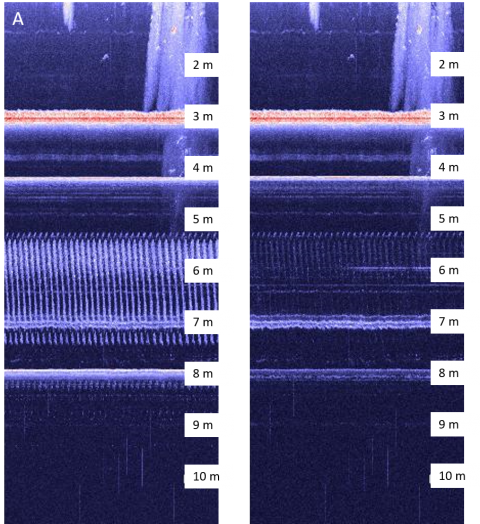Environmental Monitoring Technology Development
The Environmental Monitoring Technology Development (EMTD) task works toward making the processing of large datasets associated with underwater video cameras and other sensors used to study collision risk around turbines more efficient. Collision risk is currently a challenging environmental stressor to study and quantify, but empirical data is necessary for monitoring needs and to inform collision risk models of fish interactions used to fulfill permitting requirements for marine energy installations. Video cameras and acoustic cameras, also known as imaging sonars, are two technologies typically used to observe animal interactions with turbines at varying ranges. Video cameras require light and high enough visibility to provide meaningful imagery to document animal behavior and interactions. When low light or turbidity prevent the use of video cameras, acoustic cameras and multibeam echosounders are used. Manual processing of video and acoustic camera data is expensive and time consuming, so automated techniques are being developed.
To address the need for cost-effective, streamlined data analyses, EMTD’s research aims to decrease uncertainty and cost related to fish interaction studies and provide a technology solution to address permitting requirements and clarify risk. The project’s initial effort is working toward developing an echosounder hardware and software solution for video or acoustic cameras to archive only data containing fish/turbine interaction events, thereby reducing manual processing requirements.T he project will also test commercially available software and incorporate background subtraction algorithms into acoustic camera datasets to isolate turbine blade interference and improve data processing. Ultimately, these efforts will improve data collection, decrease time associated with data processing, and accelerate the ability to address permitting requirements addressing collision risk with marine energy devices.
